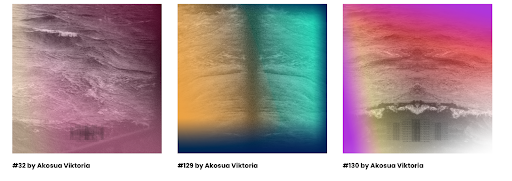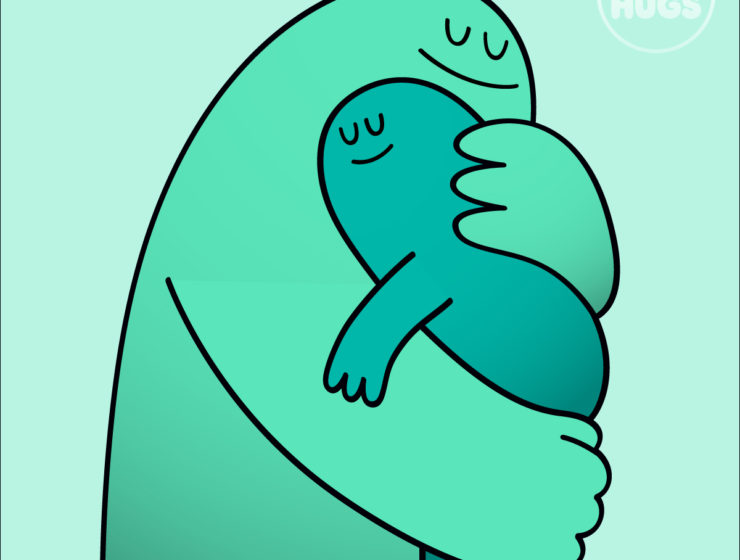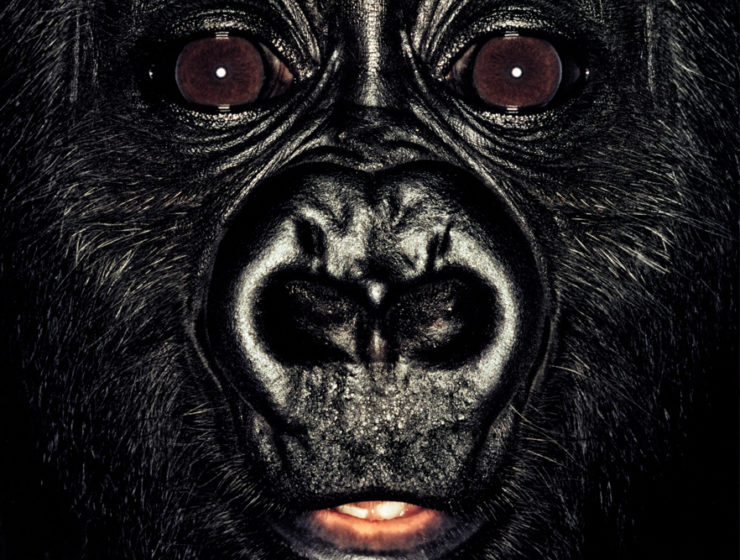“Collectors are directly supporting artists financially and hopefully that helps fund their future creative pursuits and the development of their careers over time. I try to take a lot of care in collecting the works I do, so this usually involves speaking to the artists beforehand.”
Pixel Pete (@pixelpete) is a collector who is based in Texas where he studied and later practiced architecture. After around 7 years in the field, he transitioned into architectural photography which he’s been doing ever since. This has allowed him to have much more control over his time and align himself with more creative endeavors.
Pete’s collection reflects a deep appreciation for photography and the multiplicity of the medium. The collection includes the work of artists such as Thomas Jackson, Ahmet Sel, Ella Barnes, Cameron Getty, Carlo Van de Roer, and Penelope Umbrico to name just a few. He also supports a wide range of generative projects with works from Jacek Markusiewicz, Tyler Hobbs, Jason Ting, and Rafaël Rozendaal. One thing that I personally find compelling about his gallery is the distinct interplay between the artists in both camps. It’s in the contextualization of photography within the large continuum of artwork and artists responding to technology that continuity emerges.
In our conversation, we discuss the balance of curating a thoughtful yet exciting collection, the importance of visibility for emerging artists, and Pete’s long standing appreciation of art through the lens of being an artist himself.
Art3: What was your first introduction to NFTs and how long after did you begin collecting?
PM: My first introduction to NFTs would have been Cryptopunks in 2017 through my close friend Erick / Snowfro (@ArtOnBlockchain). He’d read about them on a Reddit forum and was going through the process of claiming a bunch of them, but I was admittedly (and maybe regretfully!) a skeptic so sat back and watched. I would later buy and sell a few in those early days, but nothing serious. After that Crypto Kitties were released which I got into a little bit more and then sometime later NBA Top Shot came out, which I dove into a bit further. During the shutdown in 2020, Erick buckled down and created the infrastructure for what is now Art Blocks, which was an idea he had been working on for some time that I was peripherally involved with. With the launch of Art Blocks, I was an early member of the curation board and named an advisor, and that’s when I really began to collect NFTs.
Art3: If you could only keep one of the NFTs you have collected, which would it be?
PM: So thankful that this is not the case because in practice I think it would be next to impossible to choose! But I would say that it would likely be Dmitri Cherniak’s Ringers #713. Prior to Ringers, I had struggled to really grasp the possibilities and artistry of generative art, and Dmitri’s project was the one that really clicked with me the second that I saw the test outputs. I minted #713 (also my area code!) and a few others the day of the release and just remember the joy of that process in our small community being something really special. I would later sell another Ringers piece for a substantial amount in the craziness of the summer of 2021 which has ultimately led to my being able to be a much more substantial collector and supporter of artists in the NFT space. Needless to say, I feel that I owe the project a lot and it’s a large part of what’s made me known as a collector of both generative art and photography today.
Art3: Did you collect art before the blockchain? If so, does that inform how you collect digital art?
PM: Yes, I’ve always had a relationship with the arts (both creating and appreciating), so have a decent amount of physical artwork in my collection, but of course nothing to the scale or value of what NFTs have provided. Alongside my architectural photography practice, I’ve done a lot of work photographing the arts over the years as a way to stay in touch with that world, and as a result, have established some great friendships with artists and gallerists who I collect from.
I think that the simplest way that this informs what I’m drawn to collect in the digital arts is that I use the same sensibilities to graphic representation and artistic intent in both worlds. Being someone with a background in design, I am often first drawn to work with a bold graphic sensibility and the story behind the work often follows.
Art3: There’s a lot of talk in the community about how long to hold artwork and when to engage with the secondary market. Do you employ a strategy with your collection?
PM: I don’t have a specific prescribed strategy for how I think about secondary activity, but do think I’ve learned some general rules of thumb after having been involved with this world for the past year and a half. One thing is that I recognize the value of holding for an extended amount of time. This time frame is likely still largely unknown, but with some of the early Art Blocks work, I was able to find a nice cadence depending on what the market looked like. Nowadays, I am pretty focused on holding just about everything I collect for the foreseeable future until there seems to be an opportunity to make some sales and refine my collection to a more digestible amount of work, but I am in no rush. Patience has proven to be a virtue in this regard for me in the past, and I see no reason that won’t continue.
With photography NFTs specifically, I have been collecting work with the intention of building a large and cohesive collection of work by artists who I think really stand out, and have no intention to sell those any time soon. I do think that a healthy secondary market will be key to the longevity of the success of photography NFTs, particularly in its developing stages when the collector base is limited, so will happily participate as that develops.
Art3: Who are some of the artists that you think deserve attention right now?
PM: Akosua Viktoria (@AvaSilvery) is one that leaps to the front of my mind. From the very early days of photography NFTS, she has been pushing the limits of how to leverage the reach and scope of a project’s intent. I’m really excited to see the evolution of her ambitious body of work as her second expedition into Patagonia gets underway in the coming weeks (likely already happening as of the publishing of this interview).
Erin Bees (@erinbeess), a young generative artist, is another person whose work I’m really excited to see develop. Erin is (I think) a 15-year-old artist who has been a really active participant in the generative art community and dances to the beat of her own drum, which I find incredibly admirable in general, but specifically for someone of her age. Very excited to see what she produces in the future.
There are many (MANY) others, and I’m afraid that if I start listing them now, I’ll leave too many out who deserve attention, but I do want to call out, Computer Cowgirls (@cmptrCOWGIRLS) which is a project started by photographer Molly Dickson (@savemolly) with a mission to raise money and awareness for reproductive rights, something that is more important than ever during a time when Roe is under serious threat of being overturned. Our space often seems to shy away from socio-political issues, and I commend them for putting a project out there that stares them right in the face, contributing 100% of their proceeds to a cause.
Art3: Which was the collection, NFT or the artist who got away?
PM: There are two that come to mind immediately. One is Julie Blackmon, whose work I’ve admired for a long time and released a wonderful project through Quantum called Homegrown. For one reason or another, I have been terrible at keeping up with Quantum’s releases, particularly in their earlier days, and this is one that I really love, being a long-time fan of Julie’s work.
The other is more recent, and that’s the work of Grant Riven Yun, who creates some wonderful illustrations in a style he describes as neo-Precisionism. The work is both nostalgic and futuristic and has a clean minimal aesthetic, all of which just hits me in the right places. It also reminds me of a painter whose work I absolutely love named Molly Bounds.
Art3: What do you believe your primary role as a collector is?
PM: I try not to overthink this and mostly just act with a sense of intention and purpose. Anyone who is actively collecting should do so at a pace that they are comfortable with, which will ebb and flow based on personal circumstances.
More broadly though, I am very interested in supporting artists in a way that provides some new visibility to their work and collecting work that I think is thoughtful and exciting. The latter is a large part of why I created my website – to shed light on people who I think are doing important and meaningful work under the umbrella of photography NFTs.
Art3: Naturally, there’s a lot of speculation in the NFT space. Do you have projections as to what the next year will bring?
PM: I wish I could say with any certainty that I did! Between the inherent ties that NFTs share with crypto, its natural volatility, and the state of the global economy; projecting seems next to impossible. What I do feel confident about though is that NFTs are here to stay (hopefully not always under that moniker) and that we are just scratching the surface of what they represent and how we interact with them. I think that the next year will bring a lot of experimentation in the space and hope that this leads to new and exciting ways we experience art. From a market perspective, I think things will continue to be a bit bumpy over the coming months but I would urge artists not to let that dissuade them from putting work into the world and experimenting along the way. We are all figuring this thing out together and success will not come overnight.
Here you can find Pixel Pete’s gallery.









